|
Tech-savvy parents are finding that they don’t need the public schools in Nebraska. As Samantha Matalone Cook said in a Wired interview, “If you want something done right, do it yourself.” She was referring to educating her children at home, and with incredible ed tech advances over the last few years, it’s never been easier to “do it right” yourself.
School choice gains across the country have spurred innovation in education as the free market has entered the realm of public education, and while the public school systems in Nebraska have not picked up the ball and run with it, parents certainly can. Parents in Nebraska can “hack education” by homeschooling their kids or by using the public school system here and there as they see fit. Some parents in Lincoln have been using hybrid approaches to education for years, but it’s not until recently that larger numbers of parents have realized that LPS is not only ignoring many parents’ desires but is openly hostile to parental concerns. Fortunately, as things have been breaking down in the top-heavy bureaucratic halls of unwieldy educational institutions, new crops of startups have been creating new educational methods. Jyri Engestrom, co-founder of Flickr, explained his experiences and predictions in the previously mentioned Wired interview: Jyri Engestrom, Caterina Fake’s partner, signed up with AltSchool this year. The couple had been homeschooling for a couple of years, an experiment that gradually expanded into a 10-student “microschool” called Sesat School. This year, his students started attending AltSchool part-time, in what he calls a “hybrid” approach. He says it’s just one example of how a new crop of startups could use technology to create new educational models, somewhere between homeschooling and traditional school. He foresees a day when the same forces that have upended everything from the entertainment industry to transportation wreak havoc on our current model of education, when you can hire a teacher by the hour, just as you would hire a TaskRabbit to assemble your Ikea furniture. “I’m feeling like something is brewing right now,” Engestrom says. “The cost of starting a company has gone down because there are online tools you can use for free. I can see that happening with school. So much of that stuff is just up for grabs.” School Choice Lincoln will be compiling lists of resources and ideas to help families here in Nebraska to create individualized educations using the best sources available. Samantha Matalone Cook was right: If you want something done right, do it yourself.” Luckily for us in Nebraska, the pioneers of school choice in other parts of the country have done much of the innovation for us. We’re the beneficiaries of their forward thinking--if we take advantage of the incredible educational resources that are now available to us with a click of the mouse.
0 Comments
A single mom working full-time at a minimum wage job earns less than $20,000 a year in Nebraska. An extra $850 a year would make a big difference to her family. If she lived in any one of the states bordering Nebraska (South Dakota, Wyoming, Iowa, Missouri, Kansas, or Colorado), she’d have about $850 more every year through lower property taxes. Who is taking most of this above-and-beyond money from her? Her local school board. The average Nebraskan household pays $850 more each year than the average household in the surrounding states. You’re not immune from property taxes if you rent. Although the landlord writes the check for property taxes, the funds for that check come straight from the rent, which would be lower otherwise. Just think about the improvement to our students’ lives and our local economy if every household had that much more money to work with every year. In Nebraska Loves Public Schools’ film Poverty: Not a Choice, students say, “We are people who just need a helping hand.” Their website decries “the pockets of inequity and poverty affecting kids in public schools today.” And yet, it’s their own school boards who are creating pockets of poverty right here in Nebraska. Families in the surrounding states are not taxed as heavily. They can afford more food, clothing, lessons, and enrichment than Nebraskan families can. An Example of Careless Spending The LPS School Board is currently entertaining a proposal that highlights the misguided spending of the communities’ money. In recent years, interest has fallen for the Zoo School, also known as the LPS Science Focus Program; there are currently well under 100 students enrolled. And yet, the board of education is entertaining the prospect of spending $3 million on a building for them. The LPS public relations writer says the new Zoo School could accommodate up to a total of 200-250 students. Even if interest increases and that many students decide to attend the Zoo School, that’s an incredible amount of money spent on each one of those students, who spend just half the school day at the focus program. And the building wouldn’t even be built on land owned by the school district. Surely the public relations writer has left out some key information because this proposal doesn’t make any sense. There’s more to this story, but the rest isn’t being reported. Are questionable proposals like these worth the $850 per year that many Lincoln families are losing? Does it make sense to take all that money and put it toward an elaborate building that benefits fewer than 100 kids when every single child in the district could benefit from lower property taxes? The Ingenuity of Parents It’s clear that the LPS school board isn’t managing our $850 well. When it comes to their children, parents are full of ingenuity. They know their kids better than anyone else, and they will know best what to do with their own money. They’ll also stretch it as far is it can possibly go. They might start a 529 fund. They might pay off debts or save for a rainy day. They might hire a violin teacher or buy a pair of running shoes for their children. They might pay down their medical bills, fix a broken window, or move to a house with a yard. Just think of what all that money could do in our local economy if we the people could just have a say in how our own money is spent. There’s no reason we have to be outliers when it comes to property taxes. Other states manage to educate children without increasing poverty among its own citizens. We can do it, too. Guest post by Amanda Stafford, Center for Education Reform Charter schools across the nation have helped students increase academic performance. According to research performed by Caroline Hoxby, any charter student in the United States would be scoring 30 points higher in math by the end of 8th grade than if he remained in a traditional public school. This statistic reflects the fact that charter schools are yielding positive outcome in different cities, states, and regions across the country.
Colorado charter schools tell a story of success. In the state, 85 percent of charter elementary schools made Adequate Yearly Progress (AYP), compared to 73 percent of conventional elementary schools. Additionally, 81 percent of charter middle schools also made AYP, compared to only 49 percent of conventional middle schools. The large achievement increases have caused the waitlists for Colorado Charter Schools to grow tremendously, and demand is currently far exceeding supply, with over 108,000 students enrolling in Fall 2016. California is another state where the Charter School movement has been successful. Scores from the California's school Academic Performance Index (API), which is calculated from student test scores on a scale of 1 to 1,000, show charter schools outperforming traditional public schools in the state. Analyzing the growth of school's API scores from 2004 - 2007, it shows that 17 percent of charter schools have had significant growth, over 50 points, compared to only 6 percent of traditional public schools. California and Colorado are just two examples of how charter schools are increasing achievement and benefiting students all over the country. New York, Florida, Arizona, Indiana, and 41 others are utilizing charter schools and seeing results. As of 2015, 45 states and the District of Columbia have enacted charter school laws and several other states are pressuring governmental officials to pass these laws that will expand educational opportunities for their children. Guest post by Amanda Stafford, Center for Education Reform “What is a charter school?” This is a frequently asked question that has a relatively simple answer. Essentially, charter schools are innovative public schools. Unlike traditional public schools, they can make changes in their administrative and institutional practices in order to best serve their community. For example, many charter schools target a particular group of students, including those from low-income families or those with special needs. Charter schools often have smaller class sizes than traditional public schools, which creates a lower student to teacher ratio and provides the students with more one on one instruction. Many charter students have benefited academically from the personalization and flexibility, and in many cases, they outperform their district counterparts. For example, a study in New York found that almost 81% of 6th through 8th grade charter school students scored equal to or better than the national grade-level standard for math and English. However, only 62% of their counterparts in traditional public schools met the bar (CER). Charter schools are public schools, and like all public schools, they are funded by the state or district on a per-pupil basis. However, charter school funding does not always match that of its district counterparts. For example, charter schools are funded at approximately 64% of traditional public schools on a national level. Additionally, charter schools often lack funding to cover start-up costs such as capital expenses, which creates a significant barrier for both new schools looking to start and existing schools looking to expand. Charter schools expand educational opportunity for students and families and are successfully serving communities all around the country. If you want improved outcomes and increased opportunities for the children of Nebraska, write your state representative and let your voice be heard.  The Center for Education Reform is a valued partner of School Choice Lincoln. In an interview for Governing, Thomas Gentzel, executive director of the National School Boards Association, recently said, “I don’t think anybody is arguing that we should just have traditional public schools and we shouldn’t have these options” [referring to charter schools and other school choice options]. Wouldn’t Thomas Gentzel be surprised to hear that in Nebraska there is a well-funded organization that is spending hundreds of thousands of dollars in the regressive pursuit of convincing the public that “we should just have traditional public schools”? That’s Nebraska Loves Public Schools. Warren Buffett’s daughter Susan leads the Sherwood Foundation, which funds Nebraska Loves Public Schools. Inconceivable in most of the country, this organization is looking backward and trying to convince everyone else in Nebraska to look backward, too. Instead of looking to the school choice successes across the country, NelovesPS wants you to look away. They play on state pride as a way to convince people that what they have right now is fine as it is. Here’s an example: Translation: “Nebraska doesn’t need any of those silly choices that other, less superior, states need. They say things like “School choice is already alive and well in Nebraska and has been for decades.” Well, all you have to do is look at school choice summaries at The Heritage Foundation, The Friedman Foundation, The Parent Power Index (#49, by the way), or a myriad of other sites, to realize that this statement is more than a stretch. One of our favorite things about the Nebraska Loves Public Schools organization and their supporters is the hyperbole with which they propagandize. The following tweet is a prime example: This is a NelovesPS retweet of a teacher’s union post. Apparently, they think that the Nebraska organizations that support school choice have “deep pockets & hidden agendas” and that we want to “take resources from our kids & public schools.”
For the record, no one in Nebraska has deeper pockets than the Buffetts, and no organization has more political influence than the teacher’s unions. Yes, we know they feel threatened by the least criticism or resistance. Here at School Choice Lincoln we’ve gotten shady messages from anonymous people offering to donate to our cause if they can find out about our 501(c)(3) status. Just in case you’re curious, we don’t have 501(c)(3) status. That ought to save a few hidden people some effort. As far as taking resources from our kids and public schools: we have kids in public schools, and we don’t want to take money from our own kids. We just want more choices. We believe that more choices mean that more kids will find educational options that will best suit their needs. We believe that competition within the public school system will improve quality and variety, just like competition does in every other industry under the sun. Keep it up, Nebraska Loves Public Schools. No matter how glossy the videos or how expensive the website, you’re still pointed in the wrong direction. Most of the country doesn’t even realize that there are people who still think the way Nebraska Loves Public Schools thinks—just ask the executive director of the National School Board Association.
86% of low income parents want school choice for their children.
We expect choice in most aspects of our lives. We should have choice in our children's educations as well. Please watch the Wall Street Journal excerpt below. Seven states currently don't allow charter schools:
Of the 51 states and District of Columbia, here's how they did: Montana ranked #42 Nebraska ranked #50 North Dakota ranked #48 South Dakota ranked #51 (they didn't provide enough information to be included) Kentucky ranked #23 West Virginia ranked #27 Vermont ranked #12 Four of the bottom 10 states lack charter schools. This is telling. Even though Vermont doesn't have charter schools, they rank very well in the list of Best High Schools. Why is this? Vermont has incorporated other school choice measures into its school system for years. For example, the state has had a unique school choice program called "tuitioning" in place for 140 years. Towns that don't maintain elementary grades tuition their students to "one or more schools." These schools may be public or private. This longstanding school choice option has lifted the standards of all of Vermont's schools. What can Nebraska, North Dakota, South Dakota, and Montana do to improve their high schools? There are many answers to this questions, but one of them is adopting charter school laws. Nebraska's highest ranking high school placed at #650. This is completely unacceptable, especially for a state that spends so much money on public education. Clearly, the system needs reform. Nebraska cannot fall lower in these rankings. If this isn't a wake-up call to parents, concerned citizens, legislators, administrators, and educators, what will it take? Let’s say there’s a woman who has spent twenty years studying autism. She has raised an autistic child, studied autism in school, and worked professionally as an educator. She not only knows the research about how autistic children learn best, but she has practical working knowledge. Even more important, she is passionate about this cause. She is willing to work hard and take risks to help others with the knowledge she has gained.
If charter schools were legal in Nebraska, this woman could write a charter for a public school that would educate autistic children according to best practices. If her charter were approved, she could open a school, and suddenly, there’s a new, tuition-free option for autistic children in Lincoln. Some autistic children would continue to go to their traditional public schools because they like to be there and they’re being taught effectively. But for the children who have struggled in their neighborhood classrooms, or for the ones who are excited about being involved in this new dynamic learning environment, there’s a new option. This scenario sounds idealistic—and it is—but it’s also a reality. Two mothers in East Harlem, NY, got together and created a charter school for autistic children in 2005. The NYC Autism Charter School has been successfully serving autistic children in a low-income neighborhood for over a decade, and it will continue to serve this population as long as there is a need. It’s not just special needs students who benefit from school choice. Just as niche grocery stores pop up when there’s a demand for them, niche schools can pop up if there is a mechanism to allow them to do so. That’s why parents around the country have access to all kinds of public charter schools like the following. Keep in mind that since these are all public charter schools, students don’t have to pay tuition to attend them.
The LPS Career Academy was developed in part because it would increase LPS funding through the state aid formula. While it’s nice to have more money through the state aid formula, it’s nicer to provide opportunities that students actually want and need. LPS has had a hard time recruiting students to attend the Career Academy. It wasn’t developed from the bottom up to meet demand; it was announced from the top down: state legislators decided to give more money to districts with career academies, so the districts complied. Now we have a tremendously expensive building full of incredibly expensive resources, and district recruiters are struggling to fill it, despite bussing all the district 8th graders in for school-hour tours and repeatedly emailing all the parents in the district. What an expensive proposition for taxpayers! Here we have millions of dollars spent on an untried, undesired program. Wouldn’t it be better to start small with a new idea and grow it if it’s successful? Like businesses in competitive markets, charter schools often start small. If they’re successful, students’ parents tell their friends and colleagues, and demand for the charter school grows. The NYC Autism Charter School mentioned earlier started with just a handful of students but has grown to eight classrooms. Denver School of Science and Technology started with just one inner city school; by 2025 it will have 10,500 students spread across 11 campuses. The model worked so well and the waiting lists were so long that they began building new campuses all over the city. Sometimes charter schools fail to meet the needs of a community. If an idea doesn’t work out, the charter school closes, just as businesses close if they don’t successfully meet consumer demand. Started on shoestring budgets, taxpayers have lost very little if the idea didn’t work out, unlike Lincoln’s recent experience with the Career Academy, which we must continue to pay for even if it doesn't meet expectations. When a charter school closes, the students move to other schools that meet their needs better, and hopefully, they have lots of options to choose from. The future looks bright for students with access to school choice. How can we refuse these opportunities for Nebraska’s youth? The LPS superintendent travels around the district to meet with teachers and staff members regularly. Teachers from around the district have been reporting that in his meetings he has been commenting multiple times per meeting that teachers should be against charter schools. The message they've been getting is that since they're LPS employees, they have an obligation to politic against school choice.
Teachers are smart, though. They know that the kids of Lincoln will still be educated by teachers regardless of the organizational structure of the public schools they work for. Teaching jobs are certainly not in danger, regardless of the legalization of charter schools. Teachers also know that fewer demands from out-of-touch administrators would make their jobs more pleasurable and less constrictive. Many of them have looked to the states around us and seen that charter schools are often listed on the best places to work. Would the CEO of Target tell all the Target employees that they should be "against" Wal-Mart? That they should lobby for policies that would hurt Wal-Mart's chances of competing? No. If Target wants to capture more of the market share, they just improve their products and services. It seems that all the time and resources LPS is spending to knock down competition that doesn't even exist yet could be better spent in improving education. When competition arrives, as it surely will, many parents will continue to choose LPS, and that's great! Traditional public schools work well for many students. Why disparage alternative schools that are the perfect fit for other students? Why treat the teachers as if they can't think for themselves? And if the superintendent gets to use his platform and our tax dollars to try to sway people toward his personal political opinions, why are the teachers held to a different standard? Parents should be able to send their children to schools that use tuition dollars for education instead of for superfluous projects. In public schools, tuition is paid for by taxpayers. That's why LPS feels obliged to email newsletters out to the public after school board meetings. What do we make, then, of this excerpt from this week's school board meeting notes, sent out by LPS's public relations specialist Mary Kay Roth. from an email update sent out after the February 23rd LPS board meeting The Board of Education approved a new online patron engagement program – also designed to create a tracking system for questions and concerns from the community – in a three-year contract for $100,000 annually. LPS has branded the new program, ConnectNow, a product called “Let’s Talk” provided by K-12 Insight. The engagement program can be accessed on the front of the LPS website where community members can click, send their questions and concerns – and expect answers within two days and often sooner. The vote was 6 in favor, and Board member Matt Schulte voting no. The major goals of the program are:
Let's unpack the positive spin on this "patron engagement program."
The Board of Education just approved a $300,000 contract for an online program that allows community members to get answers to their questions within two days. We can already get answers to our questions in less than two days by simply picking up the phone and calling them. LPS is not Apple or Toyota. It doesn't have millions of customers. In fact, there is one LPS employee for every 5 LPS customers. Answering questions should be easy. What we really want LPS to be focusing on is education, not the organization's image. What did taxpayers just buy? The main goals of ConnectNow are to increase public relations, collect data on community "questions and concerns" and presumably the question-askers, and create an "awareness system" (this double-speak is unclear). How do we taxpayers like this expense? LPS is spending $100,000 per year on this particular part of their branding (there is much more spent on their image in other ways). What could we do with that $100,000 per year if it were spent on education? What could we have bought instead? The local Catholic schools can educate 20 students all year long with $100,000. For students with special interests or who want to learn something at a faster pace, we could pay for 500 of them to take an online course through the accredited UNL Online High School with that $100,000. We could have bought 14,285 copies of To Kill a Mockingbird or interactive Promethean boards for 20 classrooms. Instead, LPS gets "a front door," according to their spokesperson. It's no wonder LPS officials and teacher's union officers want to deny the opportunity of school choice to the people of Lincoln. This kind of behavior is doomed to failure in any kind of free market. Without the free market, the monopoly can spend our money on anything they want. |
|
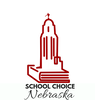



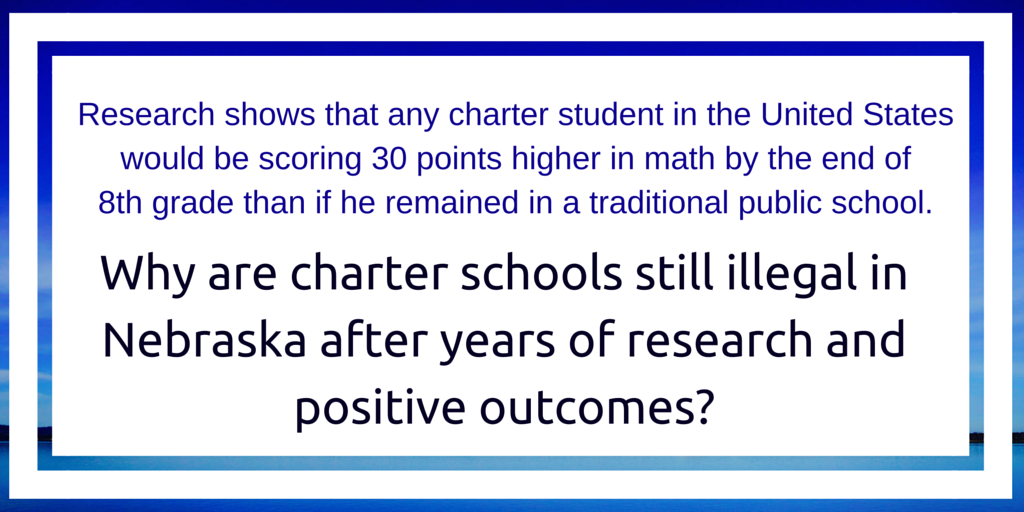

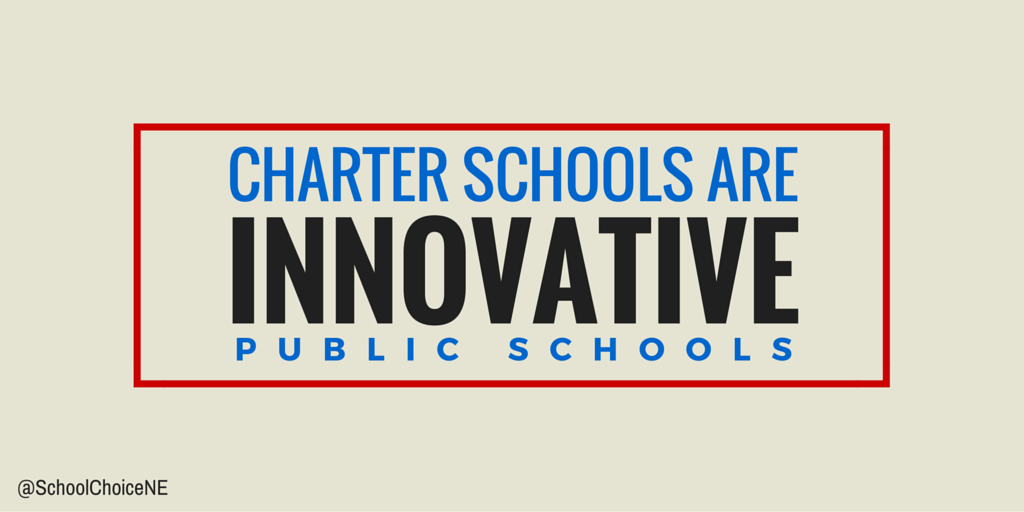
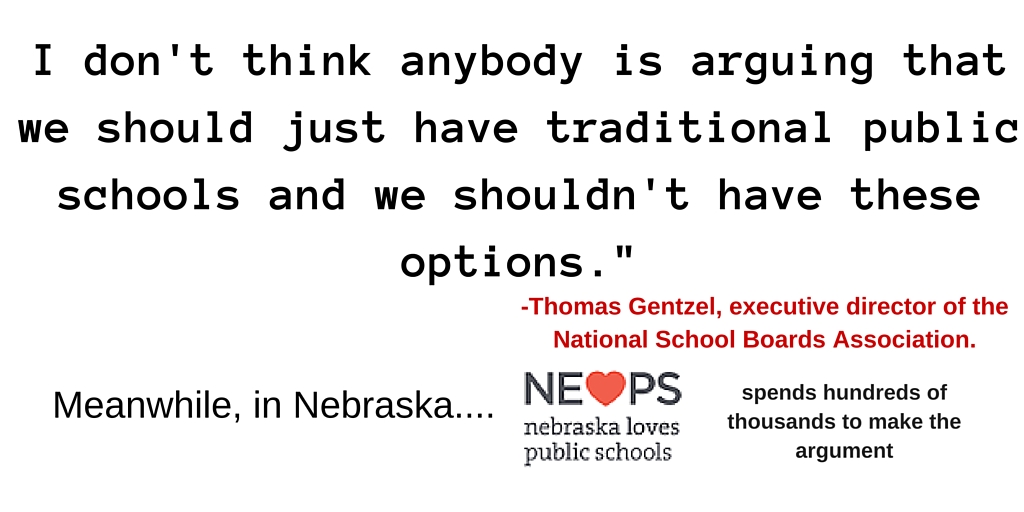
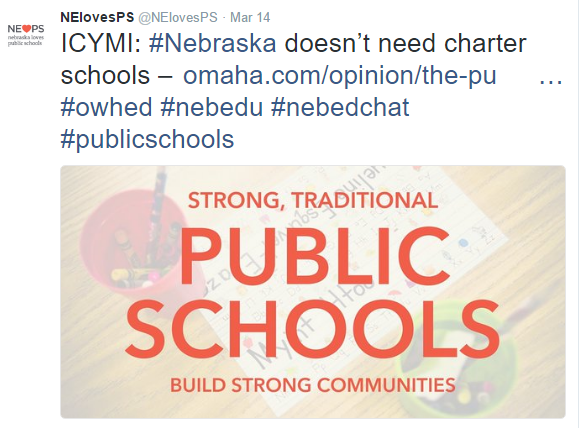

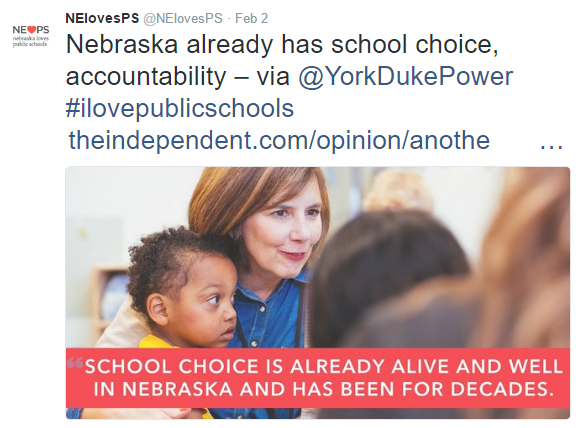

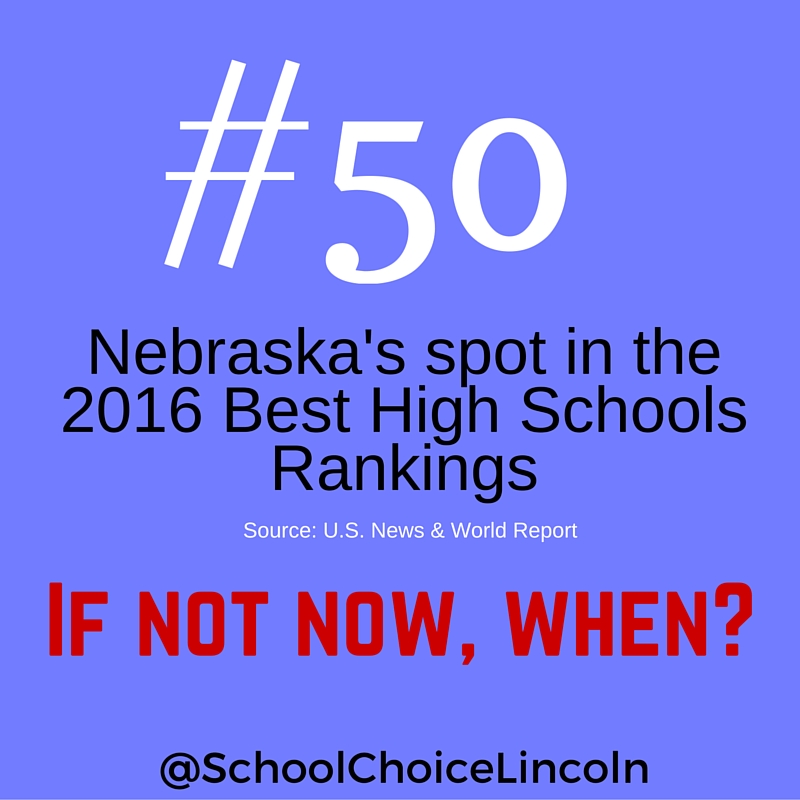
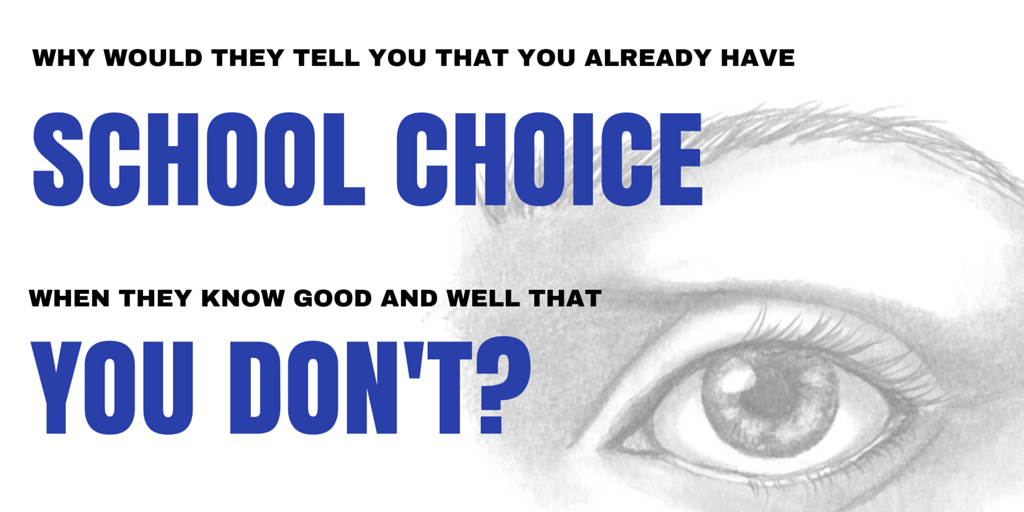
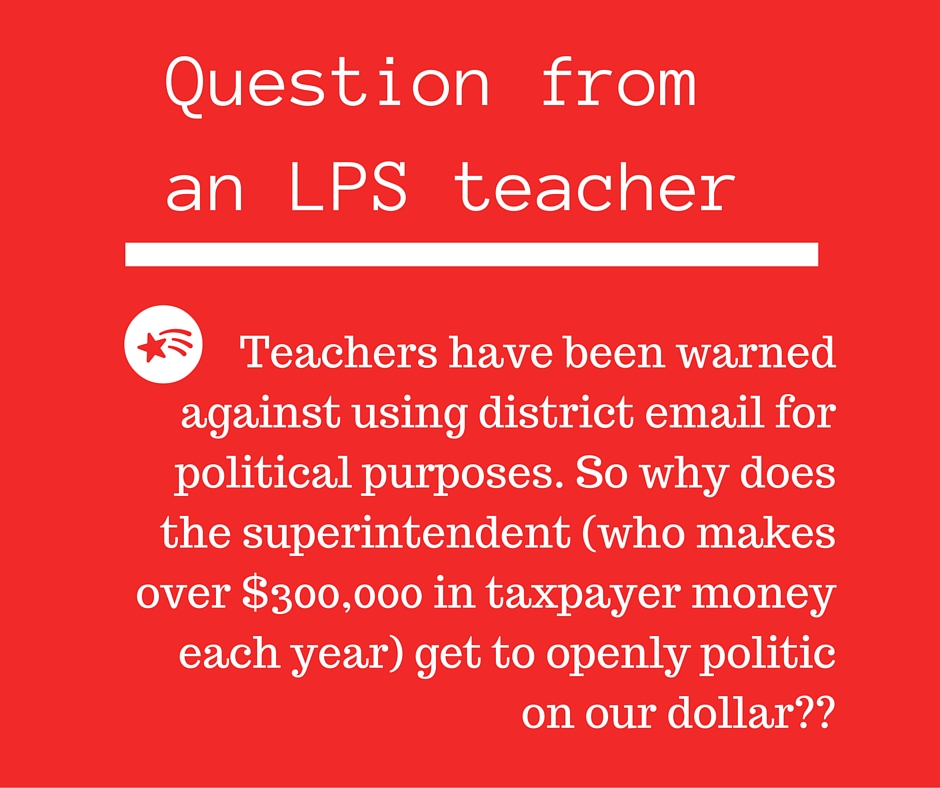
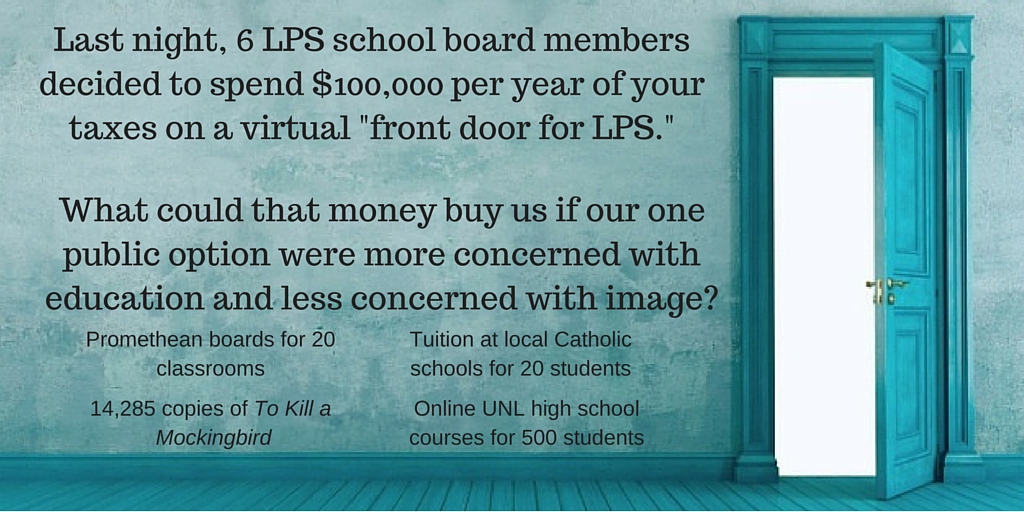
 RSS Feed
RSS Feed